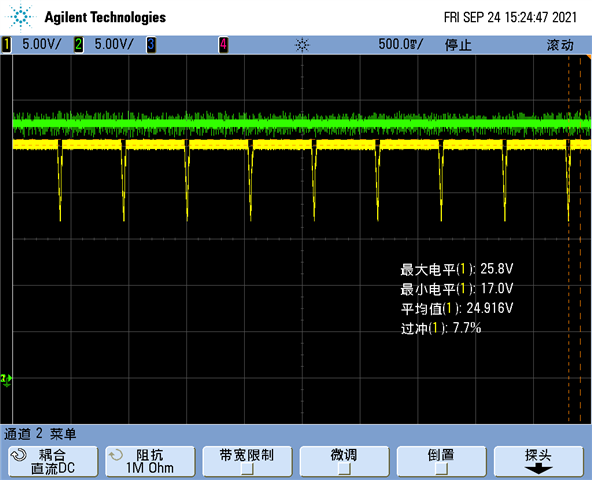Hi
The customer design with BQ24616, When the output current of BQ24616 exceeds 4A, the charging led will blink if the battery is not connected.
Input adapter 28V/8A, charging voltage 25.2V@1.8A, battery is not connected.
This is the battery detection circuit under normal conditions (the output terminal is added with an electronic load, and the electronic load has a constant current of 2A)

This is the battery detection circuit under abnormal conditions (the output terminal adds an electronic load, the electronic load has a constant current of 4A)

Schematic as below:
Why the led will blink if the load is 4A?
Waiting for your reply.
Thanks
Star


